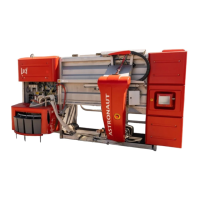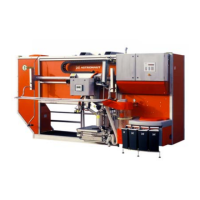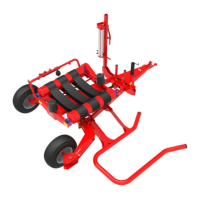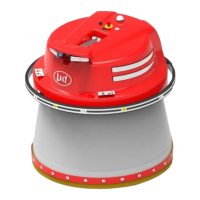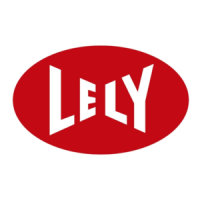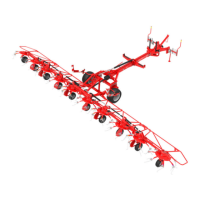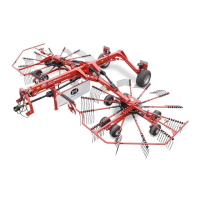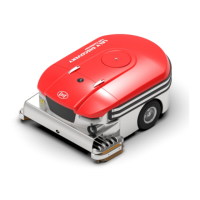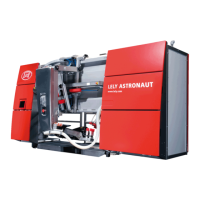
Do you have a question about the LELY ASTRONAUT A3 Next and is the answer not in the manual?
| Type | Automatic Milking System |
|---|---|
| Teat Detection System | Laser-guided |
| Control System | Touchscreen interface |
| Pre-treatment | Teat cleaning and stimulation |
| Milk Tank | Integrated |
| Cleaning System | Automatic |
| Power Supply | 400V, 50Hz |
| Dimensions (LxWxH) | 2800 x 2200 mm |
| Software | T4C |
| Connectivity | Ethernet |
| Milking Capacity | Up to 70 cows |
Describes the automated milking system and its primary parts.
Lists the three main interfaces for controlling the milking system.
Explains the purpose of safety alert symbols and signal words.
Provides general safety rules for operating and maintaining the robot.
Explains various safety symbols and their meanings.
Explains the function of emergency stop buttons and how to reset them.
Details the physical dimensions and weight of the milking robot.
Specifies the minimum space required around the robot for operation.
Lists recommended compressor units and their dimensions/weight.
Details the milk usage per quarter for testing and filling.
Lists the main systems and components of the Astronaut A3 Next.
Explains the assembly and movement of the robot arm.
Outlines the subsystems of the milking process.
Explains the T4C network's architecture and connected devices.
Outlines the stages involved in milking a cow.
Explains how alarms are indicated and the system's functions.
Details the X-Link interface for controlling and monitoring the robot.
Lists the capabilities of the CRS+ cleaning and reporting system.
Procedures for starting up and resetting the milking robot.
Essential preparations before the first milking of a cow.
Instructions for initiating cleaning cycles via the CRS+.
Procedure for moving the robot arm to its home position.
How to enable the extra feed function for cows.
Procedure for connecting the milk truck to the tank.
Steps to connect the sampling shuttle for milk collection.
Steps to acknowledge and confirm active alarms.
Schedule of preventive maintenance tasks for robot operators.
Step-by-step guide to safely shut down the milking robot.
Procedures for removing and installing robot arm side covers.
Procedure for cleaning the robot's feeding system components.
How to clean the bleed holes in the teat cups.
Inspecting teat cup liners for dirt, damage, and proper installation.
Inspecting twin tubes for damage and proper alignment.
Ensures correct Astri-products are used and their hoses are properly connected.
Checking the air compressor and dryer for proper function.
How to check attention alarms on X-Link, T4C, or CRS+.
No specific test/adjustment procedures for covers and doors.
No specific test/adjustment procedures for the box.
Procedures for calibrating the feed portion dispensed by the robot.
Steps to shorten or adjust the cup cords on the teat cups.
No specific test and adjustment procedures are listed for the milking system.
Procedure to manually record a cow's calving event in T4C.
Checks the spray pattern of the teat disinfection nozzle.
Configures how the CRS+ system triggers alarms or phone calls.
Procedures for testing the functionality of the save-life switch.
Addresses issues with milk flow in the tube due to clogged bleed holes.
Diagnoses causes for lack of milk flow from teat cups.
Troubleshooting steps if the milk jar fails to empty.
Addresses issues with dirty or non-turning cleaning brushes.
Solutions for udders not being clean before the milking process starts.
Explains why cleaning brushes might be dry and how to resolve.
Steps to troubleshoot if the X-Link interface is not operational.
Troubleshooting steps for alarm call failures at night.
Addresses issues related to the robot arm unexpectedly falling.
Troubleshooting steps when the robot arm fails to connect.
Diagnoses issues when the cow identification system fails.
Visual flowchart for troubleshooting alarm and phone call issues.
Provides metric length dimensions for the LH model.
Provides metric length dimensions for the RH model.
Explains flowchart shapes and their meanings.
